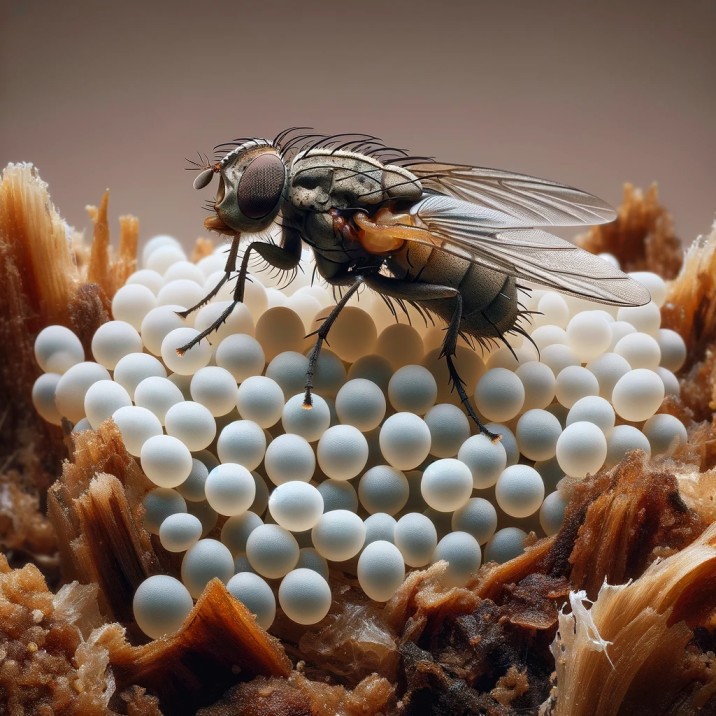We have an accurate short answer to What is the lifespan of a fly? The lifespan of a common housefly (Musca domestica) is approximately 28 days, but this can vary based on environmental conditions. This relatively short life cycle plays a critical role in their rapid population growth and widespread presence around the world. Understanding the lifecycle and lifespan of a housefly not only provides insights into their survival strategies but also helps in developing more effective pest control measures.
Lifecycle of the Housefly

The life of a housefly unfolds in four distinct stages: egg, larva, pupa, and adult, a process that can span from as little as a week to several weeks, depending on temperature and access to food.
- Egg Stage: The beginning of a housefly’s life starts when the female lays her eggs, usually in batches of 100 to 150, in warm, moist, and decaying organic material. These eggs hatch into larvae within 24 hours under optimal conditions.
- Larval Stage (Maggot): Housefly larvae, commonly known as maggots, are legless and feed voraciously on the decaying organic matter around them. This stage is crucial for growth and lasts about 5 to 10 days, during which the maggot will molt several times as it grows.
- Pupal Stage: After fully developing, the larva enters the pupal stage, encasing itself in a hard outer shell. Inside this pupal case, the maggot transforms into an adult fly. This metamorphosis takes about 3 to 6 days.
- Adult Stage: Emerging from the pupal stage, the adult housefly is primarily focused on feeding and reproducing. The lifespan of an adult housefly typically ranges from 2 to 4 weeks. During this time, a female can lay up to 500 eggs over several batches, ensuring the continuation of the population.
Factors Influencing Lifespan
Several factors can influence the lifespan of a housefly, including environmental conditions like temperature and humidity, availability of food, and predation by natural enemies. Houseflies tend to thrive in warmer conditions, which accelerate their growth and reproductive cycles, but they are also more susceptible to drying out and require constant access to moisture to survive.
Public Health and Houseflies
Houseflies are known vectors of diseases, capable of spreading pathogens by contaminating food and surfaces. Their short lifespan, combined with their breeding habits, makes them effective carriers of bacteria and viruses, including those causing typhoid fever, cholera, and dysentery. Effective waste management and sanitation are crucial in controlling housefly populations and reducing the spread of diseases.
The housefly, with its brief but eventful life, plays a significant role in nature as both a pest and a participant in the decomposition process, recycling nutrients back into the ecosystem. Their presence in human environments, however, poses health risks, making understanding their lifecycle and behavior essential for effective pest management. Despite their short lifespans, houseflies have adapted to thrive in close proximity to humans, making them one of the most ubiquitous and recognized insects on the planet.


